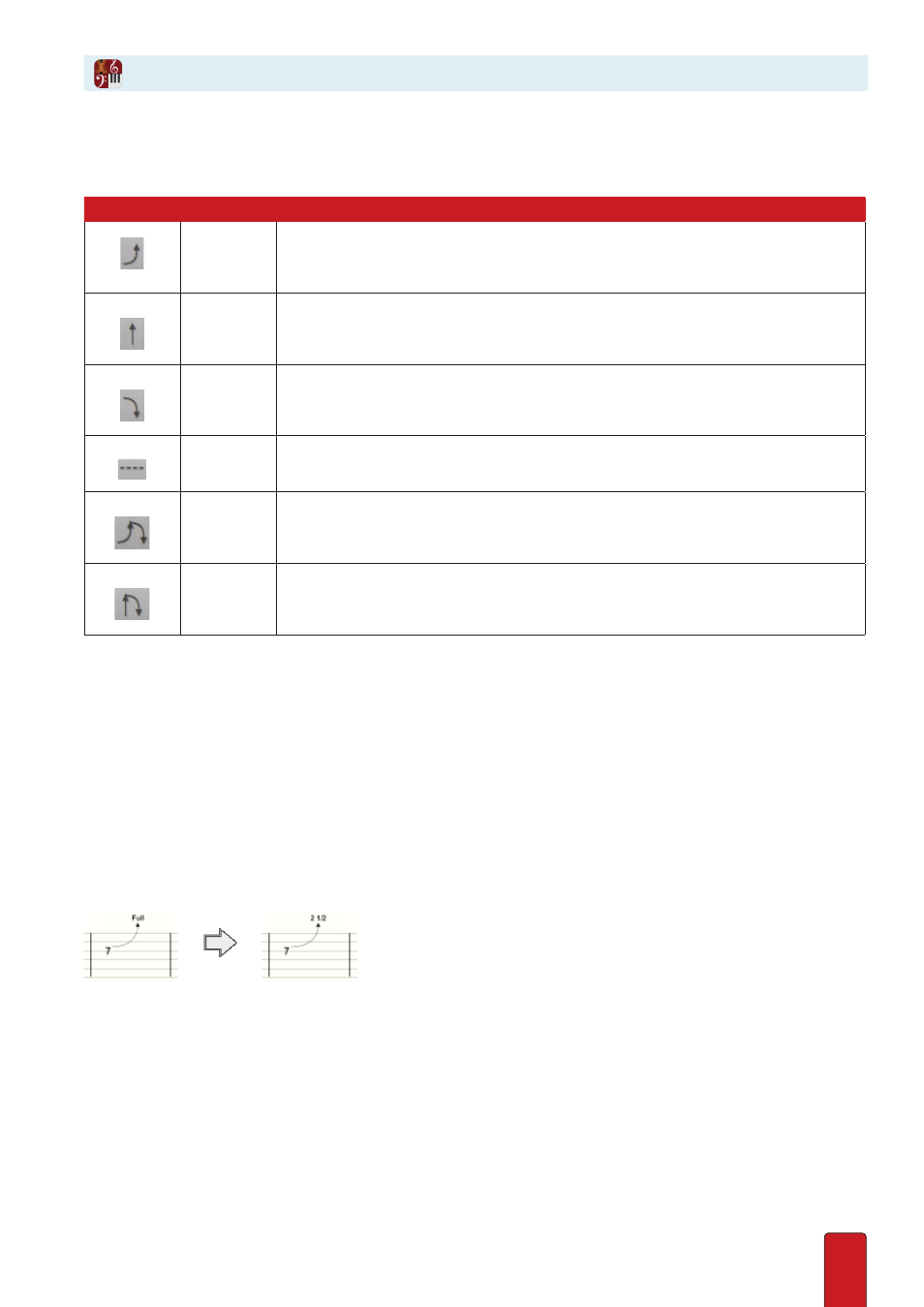Bends – PreSonus Notion 6 - Notation Software (Boxed) User Manual
Page 259

13.22
Many guitar genres make regular use of
bends
: stretching a string using a playing finger
pressing down on the fretboard to literally bend a little – or a lot . Notion easily accommodates
a wide range of bend sounds with your choice of six adjustable symbols .
Symbol
Name
What the Symbol Does
Bend
You start hearing the note at regular pitch, then hear the upward
microtonal changes in pitch as the string stretches . For example, a
full-step bend on a D note begins on a D and ends on an E .
Prebend
You first hear the note AFTER the string is stretched . This means you do not
hear the original note’s pitch . For example, a full-step prebend on a G note
plays an A – even though the notehead remains on a G on the staff .
Release
Returns string to normal and you hear the downward microtonal changes
in pitch . This symbol is never used alone, but is available to add after one of
the above (to form one of the two symbols at the bottom of this Table) .
Hold
Hold the pitch of the stretched string for a duration you set . You generally
place this symbol between a Bend or Prebend and a Release .
Bend
Release
A dual-sound symbol . You hear the upward microtonal changes
in pitch as a string stretches, then you hear downward microtonal
changes in pitch as a string returns back to normal .
Prebend
Release
A dual-sound symbol . The first sound you hear is a string already
stretched to a higher position, then you hear downward microtonal
changes in pitch as the string returns back to normal .
You can access these symbols either in the Entry Palette (fourth pane from
the left) or with the keyboard shortcut with the letter B .
Customize Pitch: Drag Up or Down
The sound of a bend is partially defined by how far you stretch a string . You can move it slightly
to give the bend almost a grace-note feel, or you can stretch the string the equivalent of many
frets, a mainstay in blues and rock leads . By default, Notion automatically provides a full-step
(major second) stretch with every Bend and Prebend, but you are free to change this .
To start, place a bend symbol on any note in the Tab staff . Notice the word “Full” (meaning “full step”)
appears at the top . Hold down a click on this word (so it turns orange) and drag it downward (for a
lower pitch change) or upward (for a higher pitch change) . Then release your click . The word Full is now
replaced with the numeric equivalent of the stretch . In the example below, after dragging the Full bend
upwards, the resultant “2 1/2” informs the software to mimic a bend of two and a half full-steps .
Changing a full step bend (default) to five half steps.
A quarter fraction, such as 1/4, refers to microtonal (quarter tone) pitches .
Bends